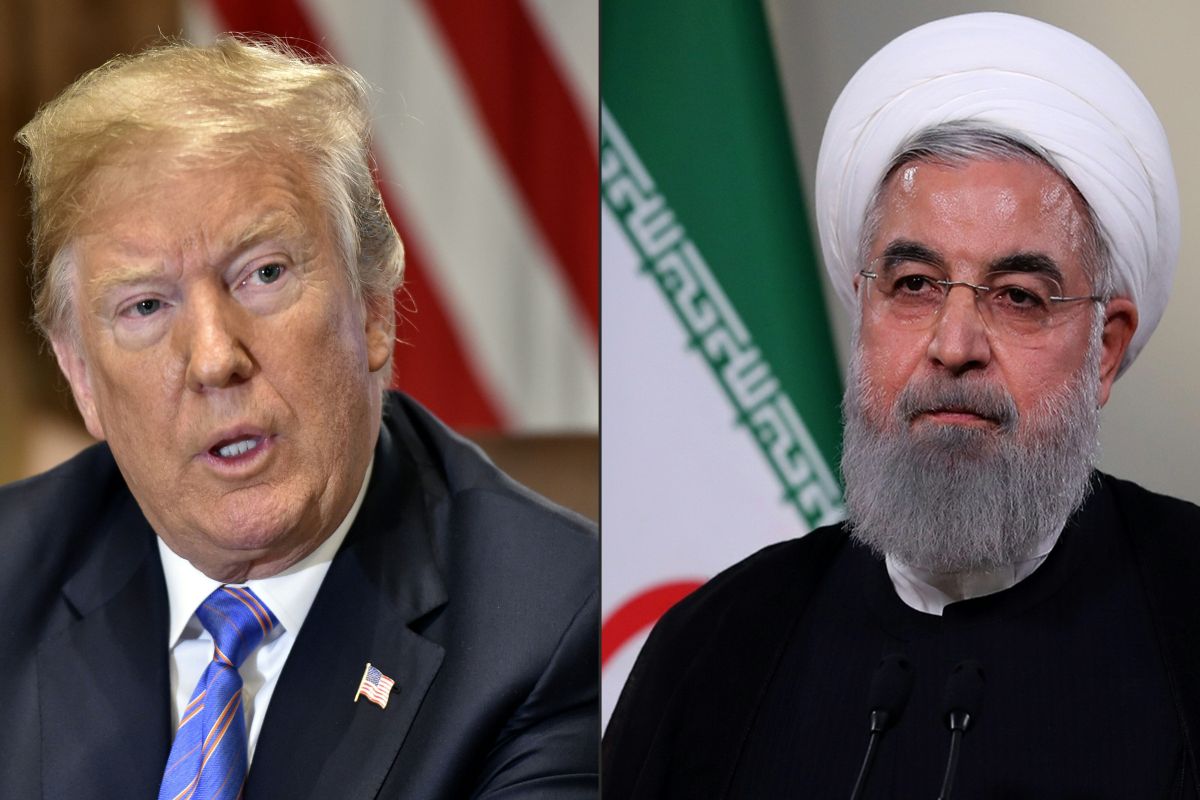Elon Musk calls for peace in cryptic post amid Iran-Israel war
His comments come amid recent attacks on Israel by Iran, reportedly in retaliation to the attack on their embassy.
The US and Saudi Arabia have repeatedly accused Iran of being behind the 14 September attacks on Saudi oilfields, which were claimed by Yemen’s Houthi movement, a group aligned with Iran and currently fighting a Saudi-led alliance in Yemen’s civil war.

(FILES)(COMBO) This combination of file pictures created on July 23, 2018 shows US President Donald Trump during a cabinet meeting on July 18, 2018, at the White House in Washington, DC, and a file handout picture provided by the Iranian presidency on May 2, 2018 on showing President Hassan Rouhani giving a speech on Iranian TV in Tehran. The White House said on September 15, 2019 President Donald Trump may still meet his Iranian counterpart Hassan Rouhani, despite the US accusing Iran of masterminding drone attacks on Saudi Arabian oil facilities. White House counselor Kellyanne Conway did not rule out the possibility in a television interview broadcast as Saudi Arabia raced to restart operations at oil plants hit by drone attacks that slashed its production. (HO, Nicholas Kamm / AFP / IRANIAN PRESIDENCY)
The war clouds are gathering over the Gulf yet again. And prior to this week’s General Assembly session, there has as yet been no attempt”at the international level to defuse the crisis that has been building up between the Iran and the United States in the”aftermath of recent drone attacks on Saudi Arabian oilfields. In less than a fortnight, the US has effected a troop build-up in the Gulf, recalling the boots-on-the-ground strategy against Saddam Hussein’s Iraq in March 2003, not to forget the Iran-Iraq war in January 1991.
It is quite palpable that pressure has been ramped up on the regime of the moderate President Hassan Rouhani and the correspondingly orthodox”supreme leader, Ayatollah Khamenei. The raging discord over Tehran’s nuclear proliferation has acquired a wholly different dimension. Donald Trump is quite obviously unnerved by the dramatic fall in oil supplies from Saudi Arabia; in the wider geostrategic canvas, his generally impetuous foreign and defence policies are on test a year ahead of the next Presidential election.
The US and Saudi Arabia have repeatedly accused Iran of being behind the 14 September attacks on Saudi oilfields, which were claimed by Yemen’s Houthi movement, a group aligned with Iran and currently fighting a Saudi-led alliance in Yemen’s civil war. The Iranian reaction to the US build-up has reinforced the war-like posturing. Iran’s elite Revolutionary Guards has let it be known that “limited agression will not be limited”. Over the weekend, President Trump approved sending American troops to bolster Saudi Arabia’s air and missile defences.
Advertisement
His action has almost immediately caused a flutter in the roost in Washington. The characteristically reckless diplomacy has been underlined with the Democrat Speaker of the House of Representatives, Nancy Pelosi, calling it Mr Trump’s “latest outrageous attempt” to circumvent Congress. In the wider perspective, she said “these unacceptable actions are cause for alarm.” She has accused the President of turning “a blind eye to Saudi violence against innocent Yemenis, human rights abuses and the murder of journalist Jamal Khashoggi.
She has hit the bull’s eye with the assertion that “the United States cannot enable more brutality and bloodshed. Congress will do our job to uphold the Constitution, defend our national security and protect the American people”. The rift between the US Legislature and the Executive is critical enough. The Speaker is stoutly opposed to a war with Iran, just as the President betrays an impatient desire. Rouhani and Ayatollah Khamenei may be enjoying a quiet chuckle, yet there is no indication that the war clouds will abate anytime soon.
Advertisement